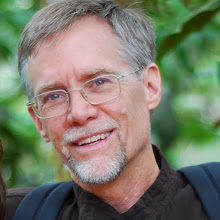Many also confuse the term “equality” as meaning "sameness", which is also not our purpose. There is infinite diversity in relative strengths and weaknesses between individuals. The inequality of mobility and wealth among races are clear signs of the persistence of racism in our societies, which caused the unbalance in the first place.
Men and women also seem to have differing physical strengths and weaknesses, and society seems to cultivate the appearance of certain mental or emotional strengths and weaknesses that have come to differentiate men and women culturally.
As I understand it, "race" is not a term that can be scientifically applied to the infinite physical varieties among human beings. The lightest blacks are whiter than the darkest whites, and vice-versa. Any physical strengths and weaknesses that may be attributed a given group are adaptations to different types of environments, not a sign of "superiority" or "inferiority".
According to the UN, therefore, "race" is not defined by shape and color but by ethnic identity. For example, the blond haired, blue eyed boys in the Ecuadorian Amazon Region who speak, think, dress, live, and act like Huaorani Indians ARE Huaorani Indians, no matter what their shape, color or ascendance may be.
As for ethnic groups, again the differences are more culturally than physically determined, and many physical differences are a product of cultural diversity (such as nutritional patterns that affect height and weight).
Manfred Max Neef et al. have a very interesting study that identifies 10 basic human needs, and then states that "culture" is the diverse answers that human groups give to those same basic needs.
There is a fascinating video called “The Global Brain”, from a Psychosynthesis Conference in Canada years ago, which starts out by using rational and scientific evidences in defense of the concept that planet Earth is actually a self-regulating, living organism in its own right (comparable to the “Gaia Theory”).
It then asks a fascinating question: What are we, as the human race, doing here? What part of this living organism are we? He concludes that our role is that of the planet’s brain (which, I might add, would potentially be capable of consciously regulating certain activities and avoiding certain pitfalls that the planet has been unable to handle alone, such as the formation of extensive deserts, global warming or cooling beyond healthy limits, and the total disappearance of species).
It then likens each individual to a neuron of that brain, and our current “population explosion” to the “neuron explosion” that occurs at a given point in a fetus’s development, without which the brain is unable to reach the “critical mass” needed to function as it should.
Reaching this critical mass must go hand-in-hand with the sister process of interconnection, which he identifies as the fantastic advances in communications and transportation technologies over the past 100 years, and which could very well enable us to “think” as a single, collective organ.
Of course, achieving this requires simultaneously developing greater diversity of thought, and at the same time getting beyond the current individualistic, mechanistic paradigm that has lead us as individual cells to live for ourselves and not for the organism we are part of, much like cancer cells in a body. In this same vein, see also “The Lives of a Cell – Notes of a Biology Watcher” by Lewis Thomas.
(June 21, 2003 )
Note: The opinions and views expressed in this article are those of the author only and do not necessarily reflect the opinion of VirtualBahai or any institution of the Baha’i Faith.

No comments:
Post a Comment